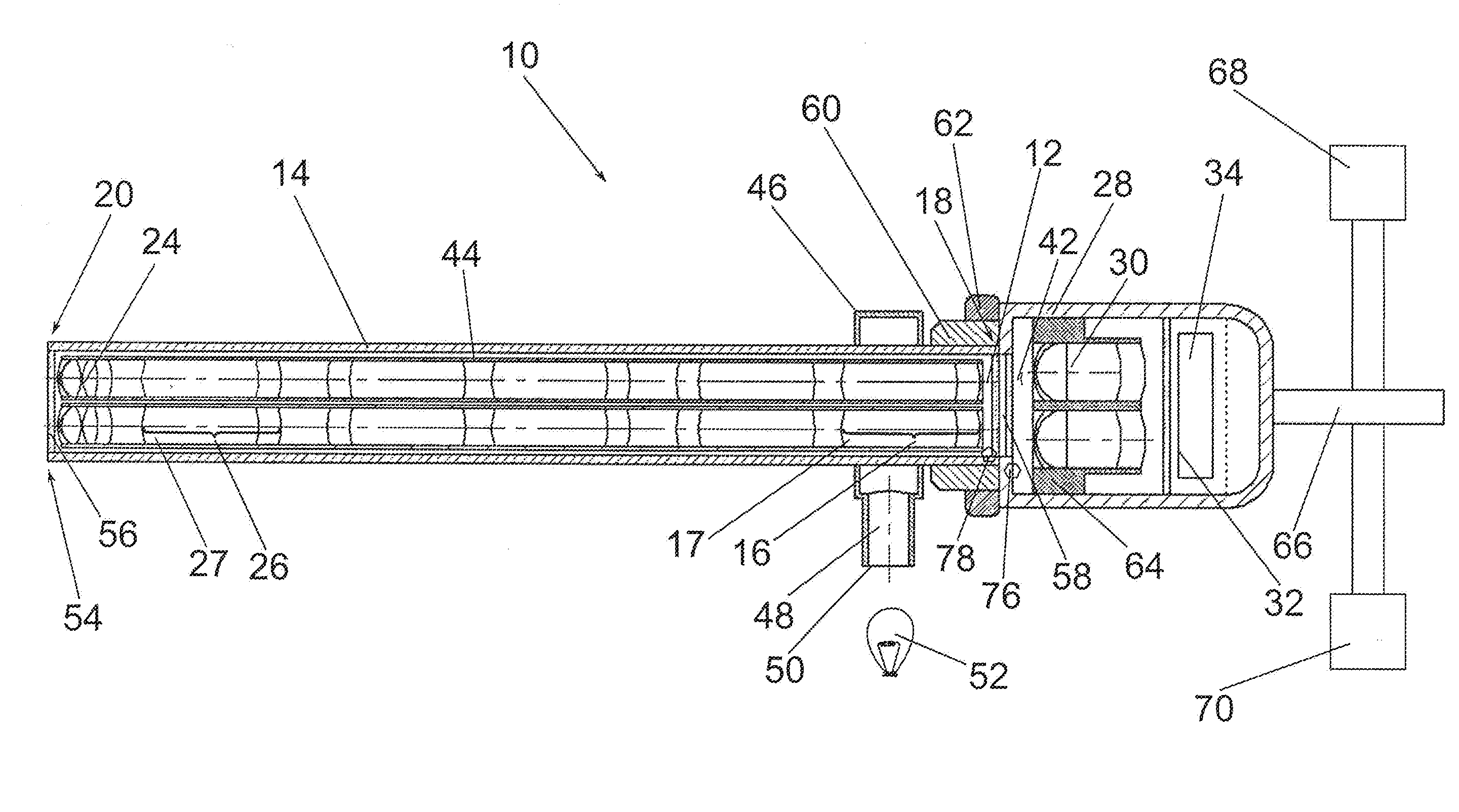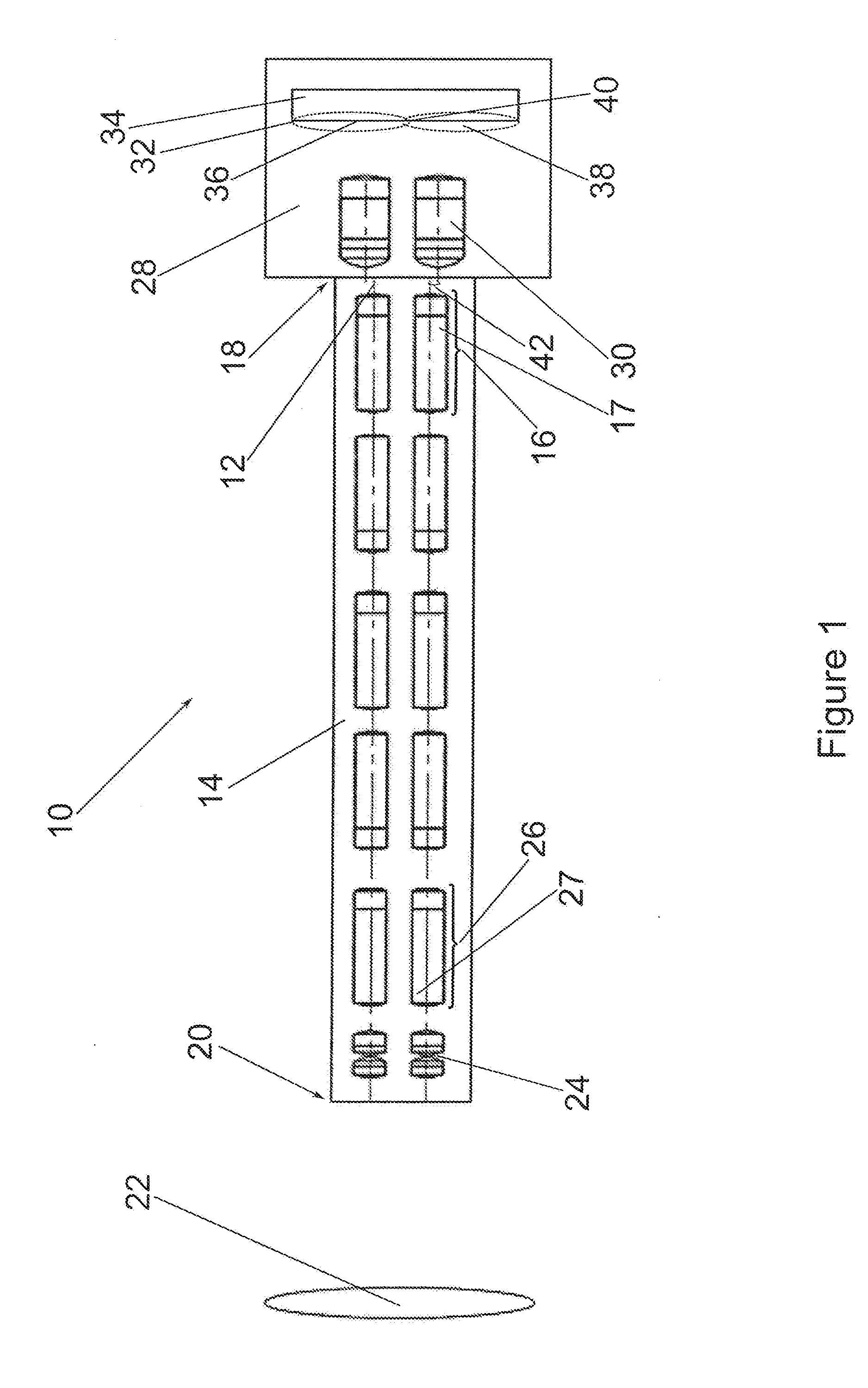Video endoscopic device
a technology of endoscope and video, which is applied in the field of video endoscope device, can solve the problems of inability to use instruments, and achieve the effects of improving image quality, reducing the number of instruments, and simplifying the assembly of the endoscope sha
- Summary
- Abstract
- Description
- Claims
- Application Information
AI Technical Summary
Benefits of technology
Problems solved by technology
Method used
Image
Examples
Embodiment Construction
[0071]FIG. 1 shows a schematic illustration of a first exemplary embodiment of a video endoscopic device 10 with two parallel beam paths 12 which extend through the interior of an endoscope shaft 14 and are collimated by a respective collimating rod lens system 16 at the proximal end 18 of the endoscope shaft 14.
[0072]An object 22 situated in front of the distal end 20 of the endoscope shaft 14 is imaged by means of two parallel objectives 24. The image generated near the distal end 20 of the endoscope shaft 14 by the objectives24 is transmitted, by means of two image guiding rod lens system arrangements which are arranged in parallel and made of a plurality of rod lens systems 26 arranged coaxially with one another, in the direction of the proximal end 18 of the endoscope shaft 14 and is collimated there by the collimating rod lens systems 16. The rod lens systems 16, 26 can consist of cemented rod lenses 17, 27 and / or of other lenses cemented therewith.
[0073]The proximal end 18 of...
PUM
 Login to View More
Login to View More Abstract
Description
Claims
Application Information
 Login to View More
Login to View More - R&D
- Intellectual Property
- Life Sciences
- Materials
- Tech Scout
- Unparalleled Data Quality
- Higher Quality Content
- 60% Fewer Hallucinations
Browse by: Latest US Patents, China's latest patents, Technical Efficacy Thesaurus, Application Domain, Technology Topic, Popular Technical Reports.
© 2025 PatSnap. All rights reserved.Legal|Privacy policy|Modern Slavery Act Transparency Statement|Sitemap|About US| Contact US: help@patsnap.com



